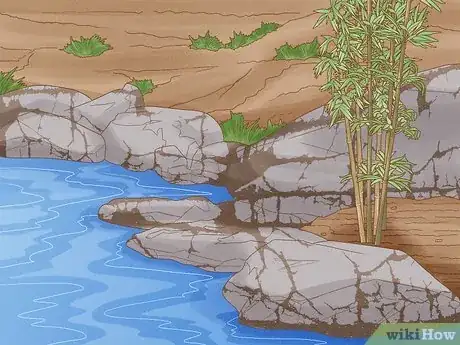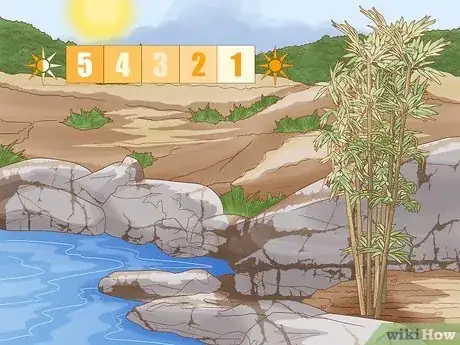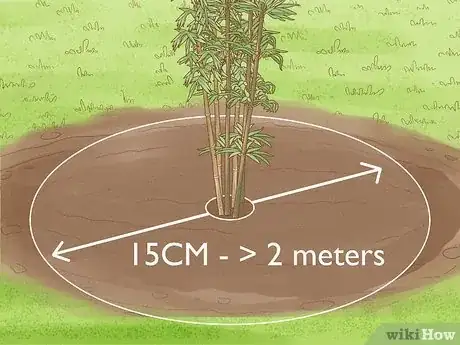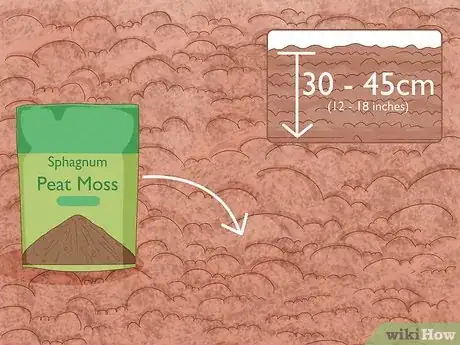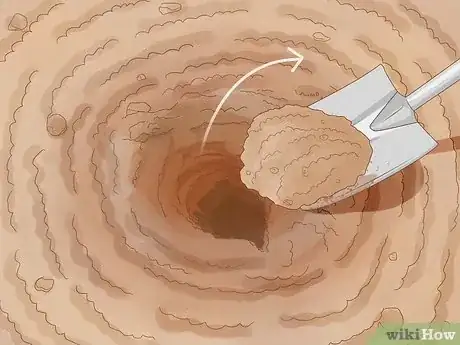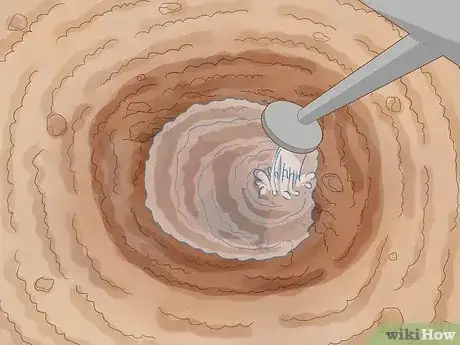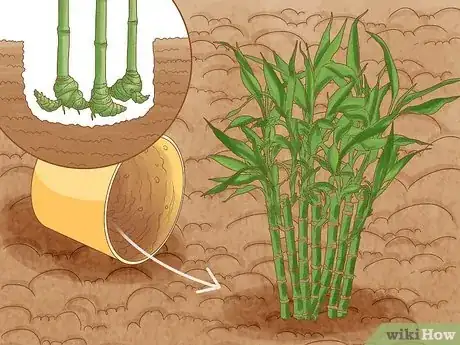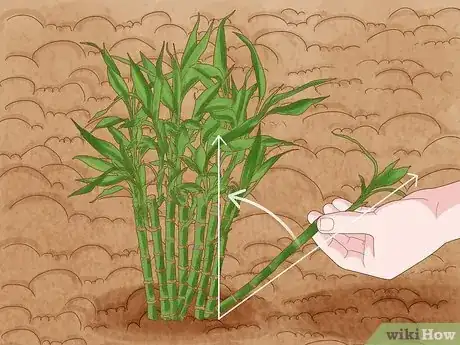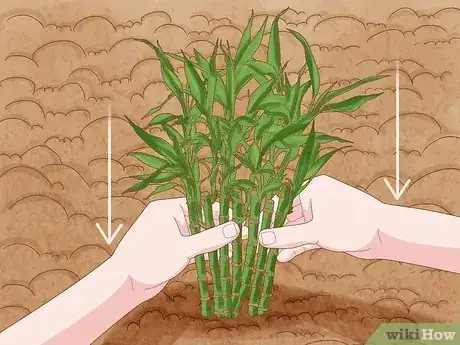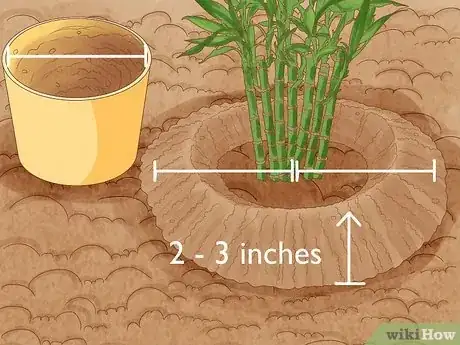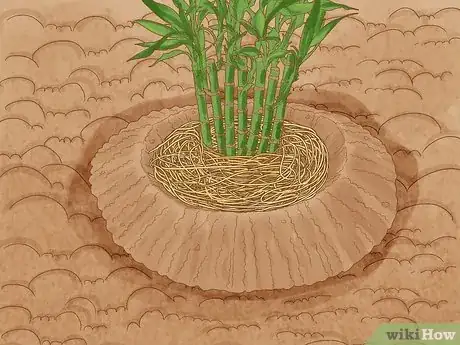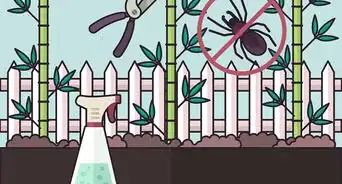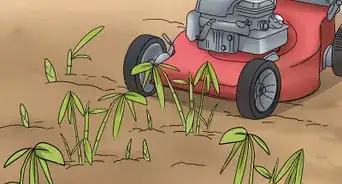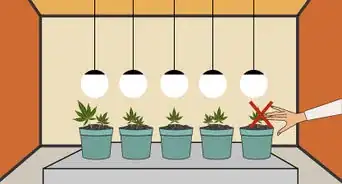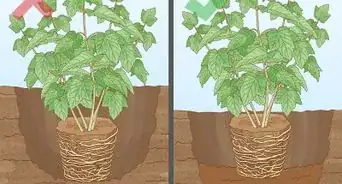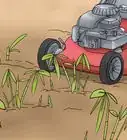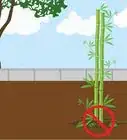wikiHow is a “wiki,” similar to Wikipedia, which means that many of our articles are co-written by multiple authors. To create this article, 17 people, some anonymous, worked to edit and improve it over time.
wikiHow marks an article as reader-approved once it receives enough positive feedback. In this case, 100% of readers who voted found the article helpful, earning it our reader-approved status.
This article has been viewed 153,196 times.
Learn more...
You may have heard that bamboo is an invasive plant that will take over your garden and eventually anger your neighbors. This need not be true for any variety of bamboo, but is especially slanderous for clumping bamboos. Bamboos are varieties of grass. And like other grasses, there are some that run everywhere, and others that form neat clumps. Here are steps to planting clumping bamboos to give them the best chance to thrive.
Steps
-
1Identify the bamboo you wish to plant. If you haven't chosen one yet, consider reading the wikiHow on "How to Choose Bamboo for Garden or Landscape" (Coming soon!). If you received an unidentified bamboo from a friend, ask bamboo-friendly nurseries or online newsgroups for help in identifying it. Bamboos have a wide variety of temperature and sun requirements. Some are more or less tolerant of drought or water saturated conditions. Knowing the needs of your plant is critical to your success in growing it.
-
2Consider the water requirements of the bamboo. Bamboos typically like as much water as a healthy lawn. Some of the larger species need a bit more. It will make maintenance a lot easier if you put your bamboo near the edge of a stream, or in a location where water is already being handled. However, note that bamboos can not endure being kept soggy. They will not grow in swamp or other saturated areas. The ideal is to have high drainage soil with frequent watering.[1]Advertisement
-
3Consider the sunlight needs of your bamboo. Almost all clumping bamboos will grow well in partial shade. Many of them can be severely harmed by too much direct sun. However, the largest clumping bamboos require full sun to attain their full size. The sun preference of bamboos is typically rated on a 1 to 5 scale where 1 is full shade and 5 is full sun.[2]
-
4Consider the space requirements of your bamboo. Clumping (pachymorph or sympodial) bamboos are fairly compact. Most varieties will not fill a square meter of ground for 20 or more years. However, the largest of tropical species can put up culms 15cm or more in diameter, and will need an area 2 or more meters around at maturity.
-
5Prepare the soil. It is much more difficult to improve soil once the bamboo is planted. Till the ground and mix in as much organic matter as you can afford. Up to half of the soil can be replaced with peat moss or well composted steer manure. Loosen the soil and add organic material to a depth of 30 to 45cm (12 to 18 inches) if you are able.[3]
-
6Dig the hole for the bamboo to go in. Make it about an inch deeper than the soil in the pot it is coming out of.
-
7Wet the hole thoroughly. It is okay to make a bit of a soupy mess.
-
8Being very careful to avoid damaging any soft new shoots or culms the plant might have, take the plant out of its pot and put it in the hole.
-
9If the plant had any culms pointing out in an undesirable direction, it is fine to straighten it up to vertical at this point. Then fill in around the plant, making sure to get firm soil contact with the soil and roots from the pot.
-
10Again, being careful not to break any new shoots, press down firmly on the plant to insure good contact in the bottom of the hole. It is okay if the plant ends up a few inches below ground level, as it will self-adjust its depth, and being deep at first will give it some additional shelter in its first summer or winter.
-
11Make a berm to help direct water to stay around the plant. This should be about twice the diameter of the pot the plant came out of, and 2 to 3 inches high.
-
12Fill the berm with mulch. Small bark chips, straw, or grass cuttings make good mulch. However, bark chips usually have a lot less weed seed mixed in with them.
-
13Water the bamboo again to help the different soil layers merge together and connect with the roots. But let it get to where it is only damp before watering again. Keeping a bamboo too wet is not good for it, and encourages rot.
Community Q&A
-
QuestionWe are removing a large cedar tree and having the stump ground. How soon can we plant a clumping bamboo?
 Community AnswerNever, the cedar debris and dust is toxic to grasses including bamboo. You should dig the stump out.
Community AnswerNever, the cedar debris and dust is toxic to grasses including bamboo. You should dig the stump out. -
QuestionHow far apart do I plant new bamboo plants?
 Community AnswerThat depends on the type of bamboo & what you want to do with them. If you want to make a screen of plants, plant them fairly closely, like 12"/30cms. If you find that's too close later on, you can always dig up every second plant & transplant them elsewhere.
Community AnswerThat depends on the type of bamboo & what you want to do with them. If you want to make a screen of plants, plant them fairly closely, like 12"/30cms. If you find that's too close later on, you can always dig up every second plant & transplant them elsewhere. -
QuestionCan I grow it in a pot?
 Community AnswerAbsolutely! As they grow larger, you will need to transplant them into larger pots to accommodate their size.
Community AnswerAbsolutely! As they grow larger, you will need to transplant them into larger pots to accommodate their size.
Warnings
- Bamboos, especially the nicer clumping varieties, are expensive. Make sure your climate will support your choice of bamboo before spending the big bucks on it.⧼thumbs_response⧽
Things You'll Need
- A bamboo plant.
- A shovel
- Composted steer manure and/or peat moss
- Soil tilling equipment such as a rotor-tiller or a garden weasel.

